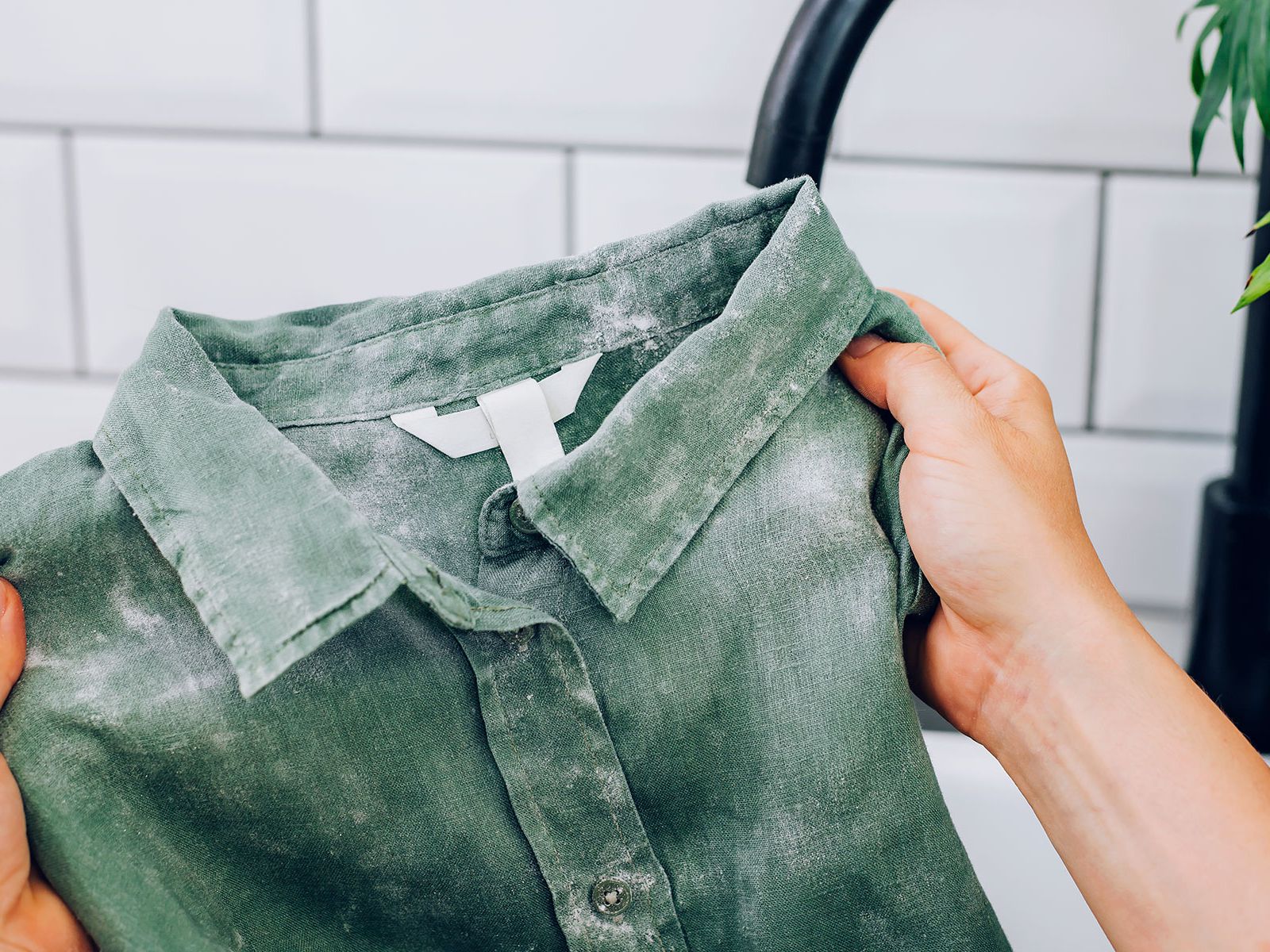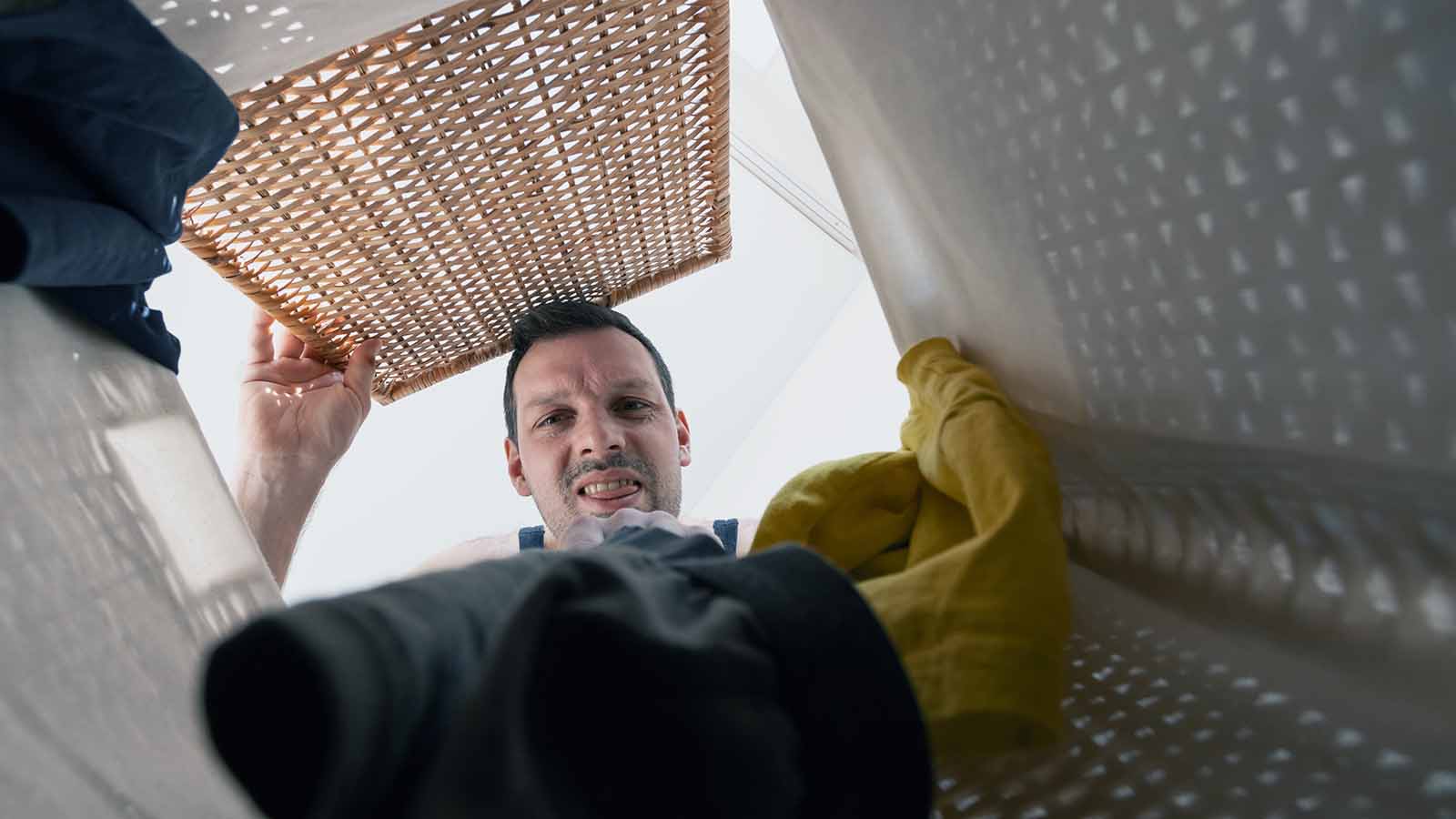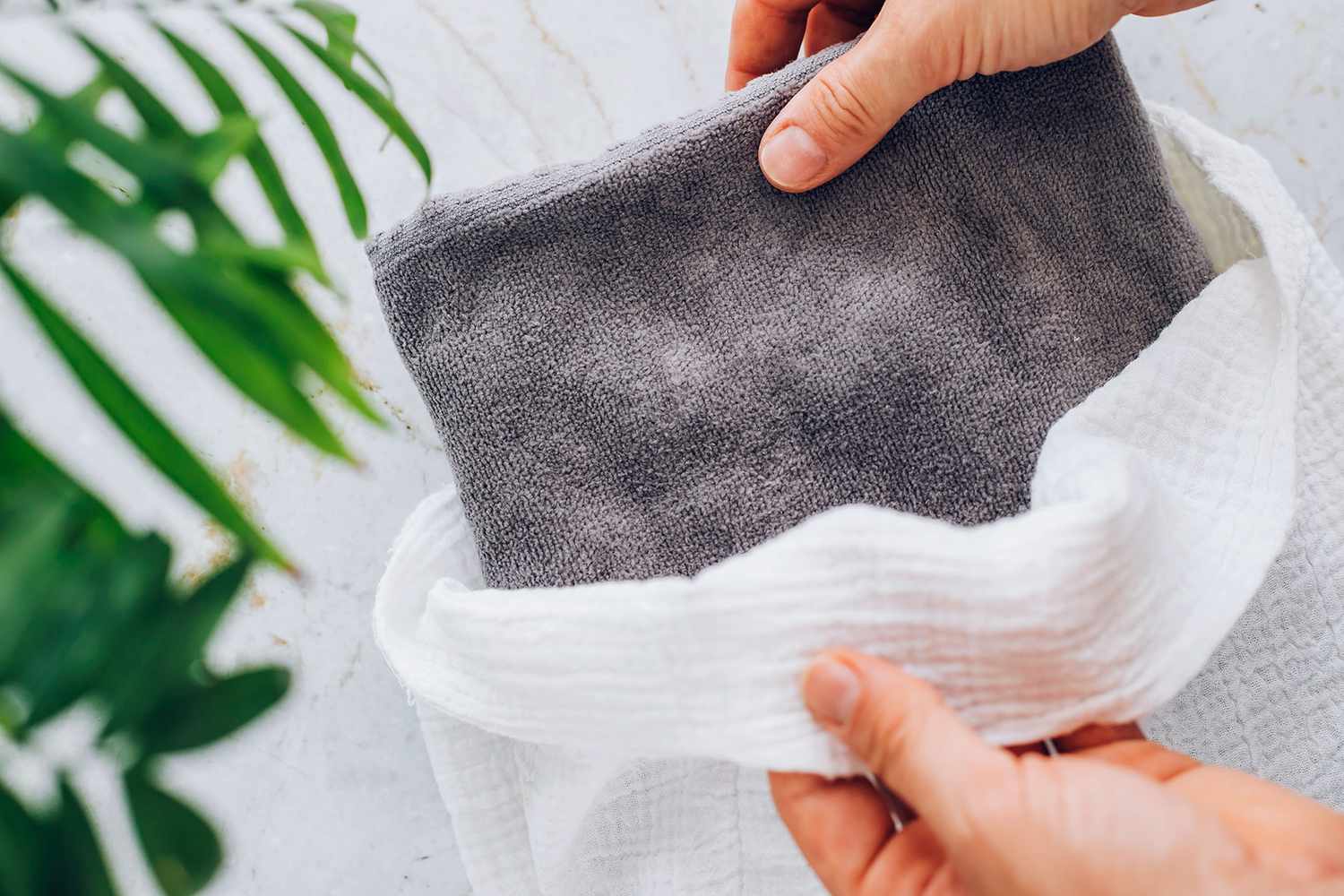
Why Does Mold Grow on Clothes?
Mold grows on clothes when they are exposed to moisture for extended periods. This can happen if you leave damp laundry in the washing machine, store clothes in a humid closet, or deal with high humidity in your home. Mold spores thrive in warm, damp environments, and fabric provides the perfect surface for them to grow. The longer clothes are left damp, the more likely mold will begin to form, leading to a musty smell and visible spots.
Mold on clothes can not only damage the fabric but also trigger allergic reactions in people sensitive to mold. According to the EPA, mold exposure can lead to sneezing, coughing, wheezing, and skin irritation. If you’ve noticed mold on your clothes, it’s essential to clean them properly to avoid these health risks.
How to Get Mold Out of Clothes: Step-by-Step Guide

To effectively remove mold from your clothes, follow these simple steps:
| Step | How to Do It |
|---|---|
| 1. Take the Clothes Outside | Before treating moldy clothes, take them outside to avoid spreading mold spores throughout your home. Shake off any loose mold spores or debris. This also helps to minimize mold exposure in your indoor environment. |
| 2. Brush Off the Mold | Use a soft brush to gently scrub off the mold from the fabric. Be careful not to scrub too hard, as this can spread spores to other parts of the clothing. Make sure to wear a mask and gloves while handling moldy items to protect yourself from inhaling spores. |
| 3. Pre-Treat with White Vinegar or Baking Soda | Both white vinegar and baking soda are excellent natural solutions for killing mold. You can either soak the clothes in a solution of one part white vinegar to two parts water or make a paste with baking soda and water and apply it directly to the moldy spots. Let the solution sit for at least 30 minutes to break down the mold. |
| 4. Wash with Hot Water and Detergent | After pre-treating, wash the clothes in hot water (check the care label to ensure the fabric can handle high temperatures). Use a good quality detergent and add 1-2 cups of white vinegar to the washing machine to help kill any remaining mold spores and eliminate odors. |
| 5. Sun-Dry Your Clothes | Sunlight is a natural mold killer. After washing, hang your clothes outside to dry in direct sunlight. The UV rays from the sun help to further disinfect the fabric and eliminate mold. Sun-drying also prevents any lingering dampness that could encourage mold to regrow. |
For stubborn mold stains, you may need to repeat the process or try a more powerful cleaner, such as hydrogen peroxide. If you’re dealing with delicate fabrics, always test the cleaning solution on a small, inconspicuous area first to ensure it won’t damage the material.
Natural Mold Removal Remedies
If you prefer eco-friendly cleaning methods, there are several natural solutions that effectively kill mold on clothes:
1. White Vinegar
White vinegar is one of the best natural cleaners for mold. Its acidic properties break down mold spores and remove the musty smell. For best results, add 1-2 cups of white vinegar directly to the washing machine during the rinse cycle. Alternatively, you can soak the clothes in a mixture of water and vinegar for an hour before washing them.
2. Baking Soda
Baking soda is another safe and natural mold remover. You can mix it with water to form a paste and apply it to the affected areas, or add a cup of baking soda to your laundry load to neutralize odors and clean the clothes. Baking soda also helps soften fabrics, making it a gentle solution for delicate clothes.
3. Hydrogen Peroxide
Hydrogen peroxide is a strong mold remover that’s safe for most fabrics. It has antibacterial and antifungal properties, making it ideal for killing mold spores. Spray a 3% hydrogen peroxide solution directly onto the moldy areas, let it sit for 10-15 minutes, and then wash the clothes as usual. Be sure to test this on a small area first, as hydrogen peroxide can bleach some fabrics.
How to Prevent Mold from Growing on Clothes

Once you’ve removed the mold from your clothes, it’s important to take steps to prevent it from coming back. Here are some tips to keep your clothes mold-free:
1. Dry Clothes Thoroughly
Mold thrives in damp environments, so always make sure your clothes are completely dry before storing them. Avoid leaving clothes in the washing machine for too long, as mold can start to grow within 24 hours. Dry clothes in the sun whenever possible, or use a dryer for quicker results.
2. Control Humidity Levels
If you live in a humid environment or have a damp home, consider using a dehumidifier to keep humidity levels low. Keeping indoor humidity below 50% will help prevent mold from growing on clothes, walls, and other surfaces. Learn more about controlling indoor humidity at Energy.gov.
3. Store Clothes Properly
Store your clothes in a cool, dry place with good ventilation. Avoid packing clothes too tightly in drawers or closets, as this can trap moisture and create the perfect conditions for mold growth. If you need to store clothes for long periods (e.g., seasonal items), use airtight storage containers and include silica gel packets to absorb excess moisture.
4. Clean Your Washing Machine
Mold can also grow inside your washing machine, which may transfer mold spores to your clothes during the wash cycle. To prevent this, regularly clean your washing machine by running an empty hot water cycle with 2 cups of white vinegar. This helps kill any mold growing inside the machine and eliminates musty odors.
When to Call Citywide Mold Mitigation for Help
If mold is a recurring problem in your home, it could be a sign of a more serious moisture issue that requires professional attention. Persistent mold on clothes, walls, or furniture may indicate hidden mold growth in your home. Mold can spread quickly, and if left untreated, it can cause extensive damage to your property and health.
Citywide Mold Mitigation offers comprehensive mold inspection and removal services. Our experts can identify the source of the mold, safely remove it, and help prevent future mold growth with moisture control solutions. Contact us today to schedule a consultation and protect your home and belongings from mold damage.
FAQ
| Question | Answer |
|---|---|
| Can moldy clothes make you sick? | Yes, wearing moldy clothes can cause allergic reactions, respiratory issues, and skin irritation. It’s important to clean moldy clothes thoroughly before wearing them again. |
| Can mold be permanently removed from clothes? | Yes, in most cases, mold can be permanently removed from clothes using the right cleaning techniques, such as washing with hot water, white vinegar, or baking soda. However, if the mold has deeply penetrated the fabric or left permanent stains, the damage might be irreversible. |
| What causes mold to grow on clothes? | Mold grows on clothes when they are left damp for extended periods. This can happen if clothes are left in the washer too long, stored in humid areas, or exposed to water leaks or high humidity levels. |
| Is it safe to use bleach on moldy clothes? | Bleach can be effective for removing mold from white or colorfast fabrics, but it may damage or fade colored fabrics. Always check the care label and test bleach on a small, inconspicuous area first to ensure it won’t harm the fabric. |
| How can I prevent mold from returning to my clothes? | To prevent mold from growing on clothes again, make sure to dry them thoroughly before storing, control humidity in your home, store clothes in a well-ventilated space, and regularly clean your washing machine to avoid mold buildup. |
| Can moldy clothes be salvaged if the smell won’t go away? | If the musty smell from mold persists even after washing, try using white vinegar or baking soda during the wash cycle to neutralize odors. If the smell still lingers, professional cleaning services may be needed, or in some cases, the clothes may be beyond saving. |
If you’re facing persistent mold problems in your home and on your clothes, don’t wait for the issue to worsen. Contact Citywide Mold Mitigation today for expert mold removal services to ensure your home is mold-free and your belongings are protected.

